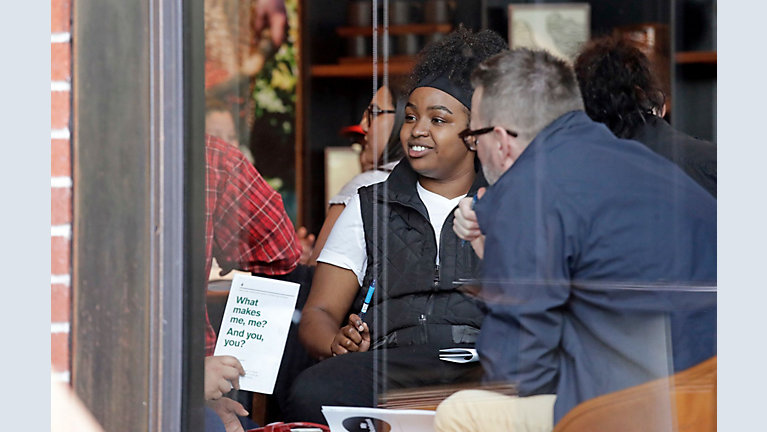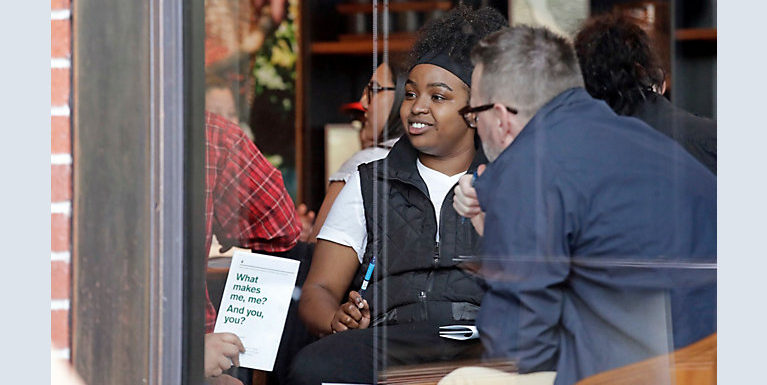
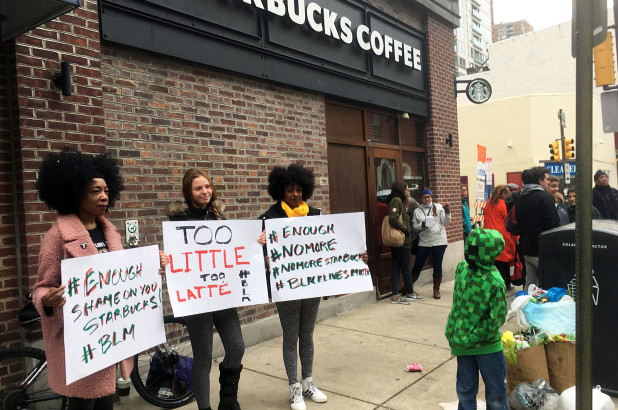
Starbucks was attemping a dramatic move toward racial reconciliation Tuesday as it closed 8,000 stores across the nation for an afternoon of anti-bias training.
Up to 180,000 employees at Starbucks stores and at its headquarters are receiving training from a “tool kit” that will “focus on understanding prejudice and the history of public accommodations in the United States.” Starbucks also said future training will address “all aspects of bias and experience.”
For Starbucks, the scope of companywide anti-bias training on Tuesday was easy to measure. Roughly 175,000 employees at 8,000 locations pored over nearly 23,000 iPads, learning about the processing power of unconscious brains and the roots of unconscious bias.
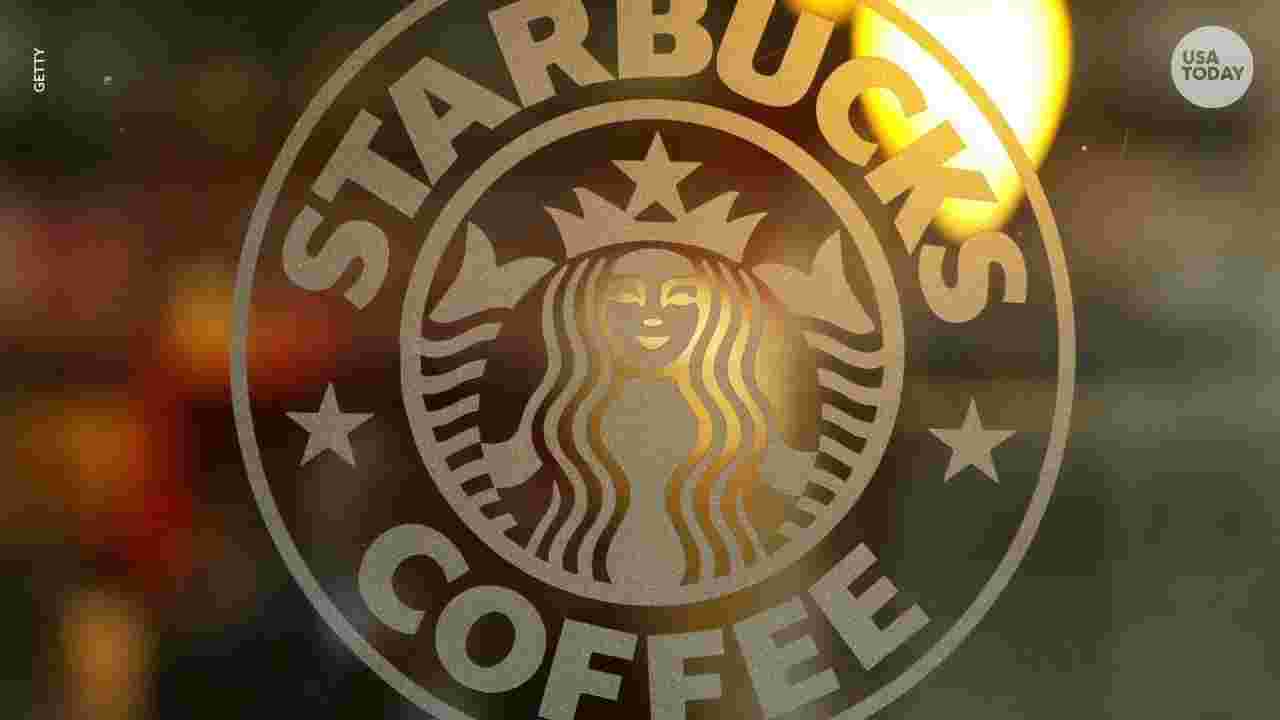
The training — part social justice crash course and part self-reflection exercise — is at the core of a well-choreographed effort by Starbucks to improve its corporate image after a backlash over the arrests of two African-American men in a Starbucks in Philadelphia last month. Since then, the company has apologized, most recently in full-page newspaper ads. It has changed its guest policy, allowing people to sit without buying anything. And it enlisted a full complement of social justice activists and policy advocates for guidance.
While 8,000 Starbucks company-operated stores are closing for racial bias training, most of the 7,000 licensed stores like locations in grocery stores, hotels, college campuses and airports will likely remain open, according to the Seattle-based coffee giant.
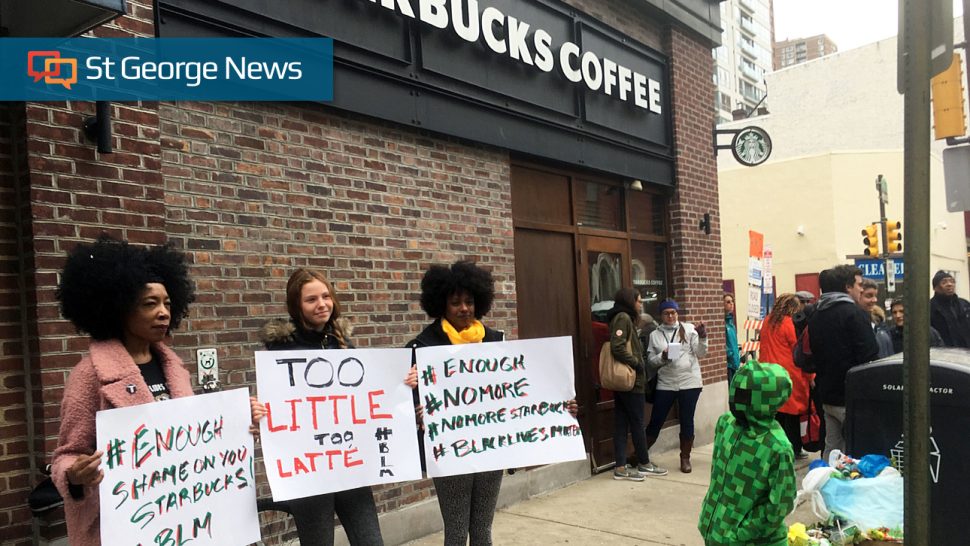 Starbucks said in a statement that the training content will be shared with these stores “so they may have the option to make it available to their employees at a later date.”
Starbucks said in a statement that the training content will be shared with these stores “so they may have the option to make it available to their employees at a later date.”
the trainings are closed to media. Starbucks gave a media preview of the session in New York in which Executive Chairman Howard Schultz said he considered the training necessary. Starbucks also offered a chance to talk to a few employees that it has selected later int eh day. The company’s plan to shield the sessions from outsiders, including members of the media, isn’t unusual and may actually help the company achieve its goals.
“Having people present who are external to the diversity training process like members of the media changes the group dynamics and may make some members less likely to be share or receive needed information thereby undermining the purpose of the training,” she said.
The company, which spent tens of millions of dollars to bring it all together, needs to put on a show. It is trying to convince customers that it is committed to social justice issues and that it wants to create a sense of community at its stores.
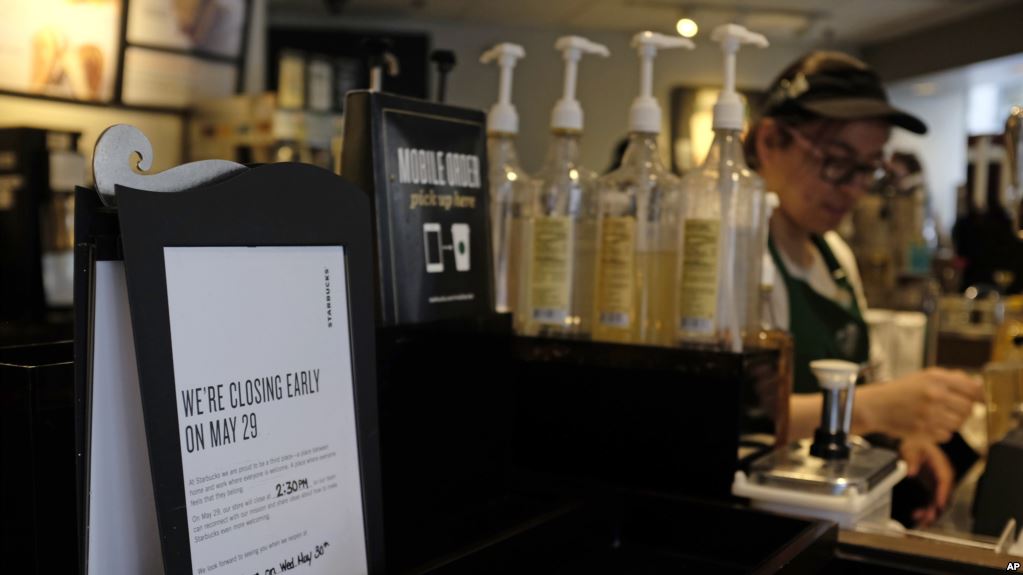 Its image was tarnished after the incident at the Starbucks in Philadelphia, where an employee called the police after two African-American men asked to use the restroom. The men, Rashon Nelson and Donte Robinson, who hadn’t made a purchase and were waiting for a business meeting, were arrested on suspicion of trespassing — a charge that prosecutors declined to pursue. Mr. Nelson and Mr. Robinson, both 23, reached a settlement this month with the city and Starbucks.
Its image was tarnished after the incident at the Starbucks in Philadelphia, where an employee called the police after two African-American men asked to use the restroom. The men, Rashon Nelson and Donte Robinson, who hadn’t made a purchase and were waiting for a business meeting, were arrested on suspicion of trespassing — a charge that prosecutors declined to pursue. Mr. Nelson and Mr. Robinson, both 23, reached a settlement this month with the city and Starbucks.
Target said it introduced its unconscious bias training program in 2017 and is rolling out this training across the company.
“Our bias training is part of Target’s commitment to making sure our team can learn and build skills that will benefit them, and in turn, help us create a welcoming and inclusive experience for our shoppers,” the Minneapolis-based company said.